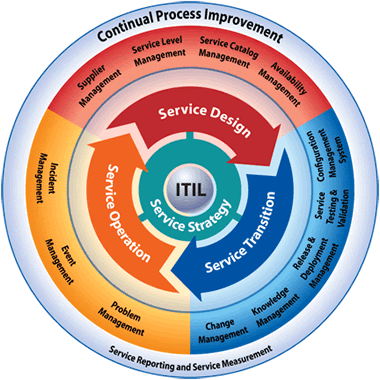IT Demography in Higher Education: Some Reminiscence & Speculation
In oversimplified caricature, many colleges and universities have traditionally staffed the line, management, and leadership layers of their IT enterprise thus:
Students with some affinity for technology (perhaps their major, perhaps work-study, perhaps just a side interest) have approached graduation not quite sure what they should do next. They’ve had some contact with the institution’s IT organizations, perhaps having worked for some part of them or perhaps having criticized their services. Whatever the reason, working for an institutional IT organization has seemed a useful way to pay the rent while figuring out what to do next, and it’s been a good deal for the IT organizations because recent graduates are usually pretty clever, know the institution well, learn fast, and are willing to work hard for relatively meager pay.
Moreover, and partly compensating for low pay, the technologies being used and considered in higher education often have been more advanced than those out in business, so sticking around has been a good way to be at the cutting edge technologically, and college and universities have tended to value and reward autonomy, curiosity, and creativity.
Within four or five years of graduation, most staff who come straight into the IT organization have figured out that it’s time to move on. Sometimes a romantic relationship has turned their attention to life plans and long-term earnings, sometimes ambition has taken more focused shape and so they seek a steeper career path, sometimes their interests have sharpened and readied them for graduate school — but in any case, they have left the campus IT organization for other pastures after a few good, productive years, and have been replaced by a new crop of recent graduates.
But a few individuals have found that working in higher education suits their particular hierarchy of needs (to adapt and somewhat distort Maslow). For them, IT work in higher education has yielded several desiderata (remember I’m still caricaturing here): there’s been job security, a stimulating academic environment, a relatively flat organization that offers considerable responsibility and flexibility, and an opportunity to work with and across state-of-the-art (and sometimes even more advanced) technologies. Benefits have been pretty good, even though pay hasn’t and there have been no stock options. Individuals to whom this mix appeals have stayed in campus IT, rising to middle-management levels, sometimes getting degrees in the process, and sometimes, as they have moved into #3 or #2 positions, even moving to other campuses as opportunities present themselves.
Higher-education IT leaders — that is, CIOs, the heads of major decentralized IT organizations, and in some cases the #2s within large central organizations — typically have come from one of two sources. Some have come from within higher-education IT organizations, sometimes the institution’s own but more typically, since a given institution usually has more leadership-ready middle managers than it has available leadership positions, another institution’s. (Whereas insiders once tended to be heavy-metal computer-center directors, more recently they have come from academic technologies or networking.) Other leaders have come from faculty ranks, often (but not exclusively) in computer science or other technically-oriented disciplines. Occasionally some come from other sources, such as consulting firms or even technology vendors, or even from administration elsewhere in higher education.
 The traditional approach staffs IT organizations with well educated, generally clever individuals highly attuned to the institution’s culture and needs. They are willing and able to tackle complex IT projects involving messy integration among different technologies. Those individuals also cost less that comparable ones would if hired from outside. Expected turnover among line staff notwithstanding, they are loyal to the institution even in the face of financial and management challenges.
The traditional approach staffs IT organizations with well educated, generally clever individuals highly attuned to the institution’s culture and needs. They are willing and able to tackle complex IT projects involving messy integration among different technologies. Those individuals also cost less that comparable ones would if hired from outside. Expected turnover among line staff notwithstanding, they are loyal to the institution even in the face of financial and management challenges.
But the traditional model also tilts IT organizations toward idiosyncrasy and patchwork rather than coherent architecture and efficiency-driven implementation. It often works against the adoption of effective management techniques, and it can promote hostility toward businesslike approaches to procurement and integration and indeed the entire commercial IT marketplace. All of this has been known, but in general institutions have continued to believe that the advantages of the traditional model outweigh its shortcomings.
 I saw Moneyball in early October. I liked it mostly because it’s highly entertaining, it’s a good story, it’s well written, acted, directed, and produced, and it involves both applied statistical analysis (which is my training) and baseball (my son’s passion, and mine when the Red Sox are in the playoffs). I also liked it because its focus — dramatic change in how one staffs baseball teams — led me to think about college and university IT staffing. (And yes, I know my principles list says that “all sports analogies mislead”, but never mind.)
I saw Moneyball in early October. I liked it mostly because it’s highly entertaining, it’s a good story, it’s well written, acted, directed, and produced, and it involves both applied statistical analysis (which is my training) and baseball (my son’s passion, and mine when the Red Sox are in the playoffs). I also liked it because its focus — dramatic change in how one staffs baseball teams — led me to think about college and university IT staffing. (And yes, I know my principles list says that “all sports analogies mislead”, but never mind.)
In one early scene, the Oakland A’s scouting staff explains to Brad Pitt’s character, Billy Beane, that choosing players depends on intuition honed by decades of experience with how the game is played, and that the approach Beane is proposing — choosing them based on how games are won rather than on intuition — is dangerous and foolhardy. Later, Arliss Howard’s character, the Red Sox owner John Henry, explains that whenever one goes against long tradition all hell breaks loose, and whoever pioneers or even advocates that change is likely to get bloodied.
 So now I’ll move from oversimplification and caricature to speculation. To believe in the continued validity of the traditional staffing model may be to emulate the scouts in Moneyball. But to abandon the model is risky, since it’s not clear how higher-education IT can maintain its viability in a more “businesslike” model based on externally defined architectures, service models, and metrics. After all, Billy Beane’s Oakland A’s still haven’t won the World Series.
So now I’ll move from oversimplification and caricature to speculation. To believe in the continued validity of the traditional staffing model may be to emulate the scouts in Moneyball. But to abandon the model is risky, since it’s not clear how higher-education IT can maintain its viability in a more “businesslike” model based on externally defined architectures, service models, and metrics. After all, Billy Beane’s Oakland A’s still haven’t won the World Series.
The Beane-like critique of the traditional model isn’t that the advantage/shortcoming balance has shifted, but rather that it depends on several key assumptions whose future validity is questionable. To cite four interrelated ones:
 With the increasing sophistication of mobile devices and cloud-based services, the locus of technological innovation has shifted away from colleges and universities. Recent graduates who want to be in the thick of things while figuring out their life plans have much better options than staying on campus — they can intern at big technology firms, or join startups, or even start their own small businesses. In short, there is now competition for young graduates interested IT but unsure of their long-term plans.
With the increasing sophistication of mobile devices and cloud-based services, the locus of technological innovation has shifted away from colleges and universities. Recent graduates who want to be in the thick of things while figuring out their life plans have much better options than staying on campus — they can intern at big technology firms, or join startups, or even start their own small businesses. In short, there is now competition for young graduates interested IT but unsure of their long-term plans.- As campuses have outsourced or standardized much of their IT, jobs that once included development and integration responsibility have evolved into operations, support, and maintenance — which are important, but not very interesting intellectually, and which provide little career development. Increased outsourcing has exacerbated this, and so has increased reliance on business-based metrics for things like user support and business-based architectures for things like authentication and systems integration.
 College and university IT departments could once offset this intellectual narrowing because technology prices were dropping faster than available funds, and the resulting financial cushion could be dedicated to providing staff with resources and flexibility to go beyond their specific jobs (okay, maybe what I mean is letting staff buy gadgets and play with them). But tightened attention to productivity and resource constraints have large eliminated the offsetting toys and flexibility. So IT jobs in colleges and universities have lost much of their nonpecuniary attractiveness, without any commensurate increase in compensation. Because of this, line staff are less likely to choose careers in college or university IT, and without this source of replenishment the higher-education IT management layer is aging.
College and university IT departments could once offset this intellectual narrowing because technology prices were dropping faster than available funds, and the resulting financial cushion could be dedicated to providing staff with resources and flexibility to go beyond their specific jobs (okay, maybe what I mean is letting staff buy gadgets and play with them). But tightened attention to productivity and resource constraints have large eliminated the offsetting toys and flexibility. So IT jobs in colleges and universities have lost much of their nonpecuniary attractiveness, without any commensurate increase in compensation. Because of this, line staff are less likely to choose careers in college or university IT, and without this source of replenishment the higher-education IT management layer is aging. As IT has become pervasively important to higher education, so responsibility for its strategic direction has broadened. As strategic direction has broadened, so senior leadership jobs, including the CIO’s, have evolved away from hierarchical control and toward collaboration and influence. (I’ve written about this elsewhere.) At the same time, increasing attention to business-like norms and metrics has required that IT leaders possess a somewhat different skillset than usually emerges from gradual promotion within college and university IT organizations or faculty experience. This has disrupted the supply chain for college and university IT leadership, as a highly fragmented group of headhunter firms competes to identify and recruit nontraditional candidates.
As IT has become pervasively important to higher education, so responsibility for its strategic direction has broadened. As strategic direction has broadened, so senior leadership jobs, including the CIO’s, have evolved away from hierarchical control and toward collaboration and influence. (I’ve written about this elsewhere.) At the same time, increasing attention to business-like norms and metrics has required that IT leaders possess a somewhat different skillset than usually emerges from gradual promotion within college and university IT organizations or faculty experience. This has disrupted the supply chain for college and university IT leadership, as a highly fragmented group of headhunter firms competes to identify and recruit nontraditional candidates.
I think we’re already seeing dramatic change resulting from all this. The most obvious change is rapid standardization around commercial standards to enable outsourcing — which is appealing not only intrinsically, but because it reduces dependence on an institution’s own staff. (On the minus side, it also tends to emphasize proprietary commercial rather than open-source or open-standards approaches.) I also sense much greater interest in hiring from outside higher education, both at the line and management levels, and a concomitant reappraisal of compensation levels. That, combined with flat or shrinking resources, is eliminating positions, and the elimination of positions is promoting even more rapid standardization and outsourcing.
 On the plus side, this is making college and university IT departments much more efficient and businesslike. On the minus side, higher education IT organizations may be losing their ability to innovate. This is yet another instance of the difficult choice facing us in higher-education IT: Is IT simply an important, central element of educational, research, and administrative infrastructure, or is IT also the vehicle for fundamental change in how higher education works? (In Moneyball, the choice is between player recruitment as a mechanism for generating runs, and as a mechanism for exciting fans. Sure, Red Sox fans want to win. But were they more avid before or after the Curse ended with Bill James’s help?)
On the plus side, this is making college and university IT departments much more efficient and businesslike. On the minus side, higher education IT organizations may be losing their ability to innovate. This is yet another instance of the difficult choice facing us in higher-education IT: Is IT simply an important, central element of educational, research, and administrative infrastructure, or is IT also the vehicle for fundamental change in how higher education works? (In Moneyball, the choice is between player recruitment as a mechanism for generating runs, and as a mechanism for exciting fans. Sure, Red Sox fans want to win. But were they more avid before or after the Curse ended with Bill James’s help?)
If it’s the latter, we need to make sure we’re equipped to enable that — something that neither the traditional model nor the evolving “businesslike” model really does.